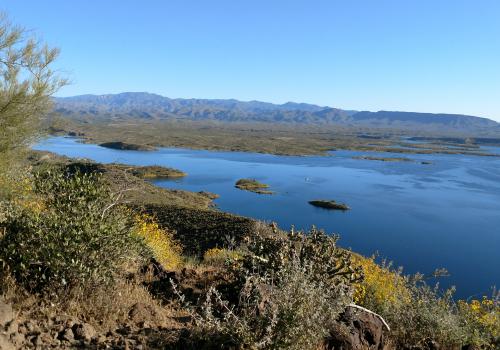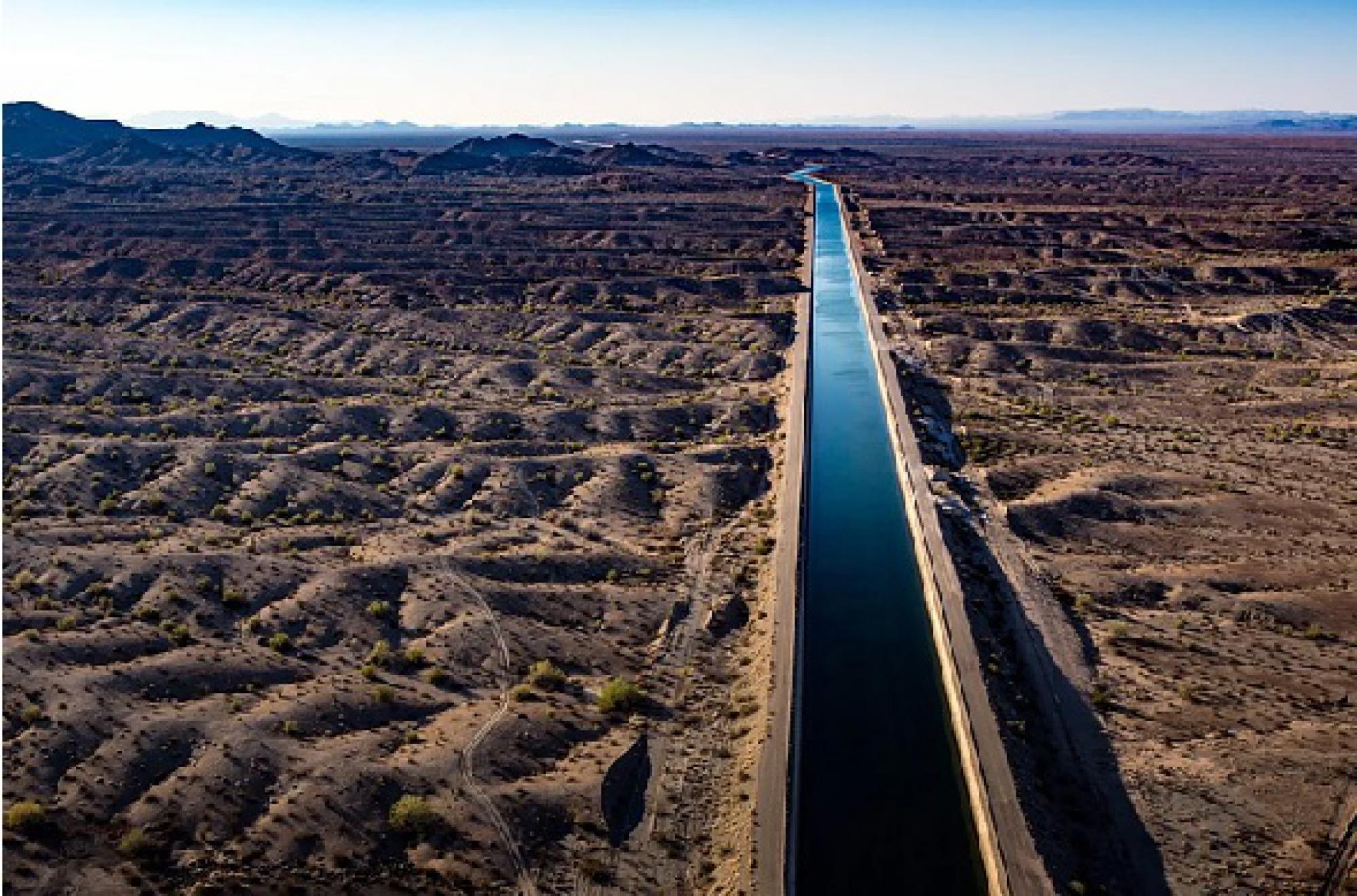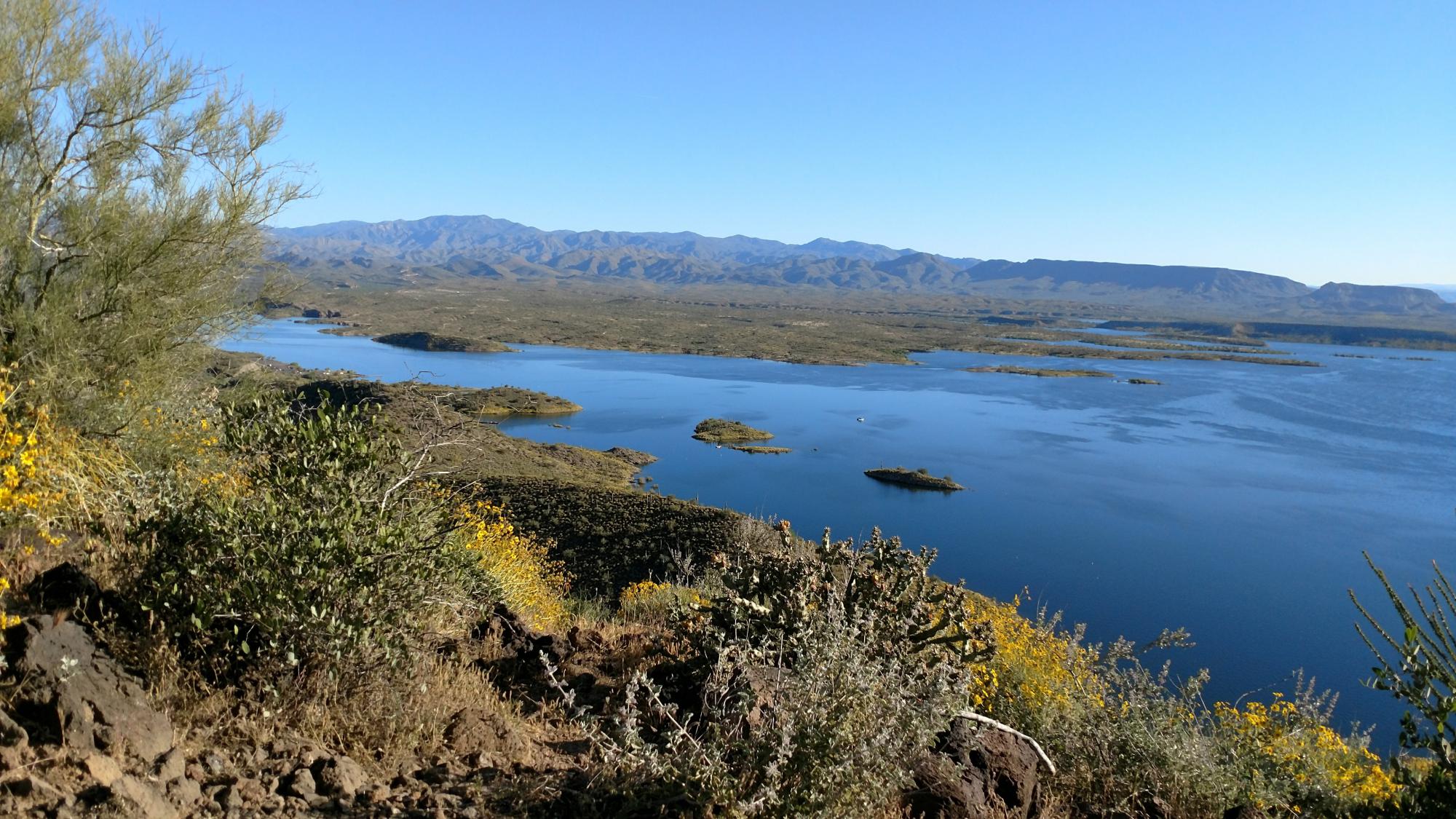Looking for an empowering way for students to learn about Arizona's water resources and challenges?
If so, the Waters of Arizona (WOAZA) Aqua STEM unit offers students a deeper dive into our region's water supplies. WOAZA inspires students by activating 3D Learning in the classroom using relevant, standards-based instruction. Students dig into Arizona’s unique hydrological cycle and explore the forces Arizona harnesses to ensure a vital water supply for 5 million desert dwellers. They ask questions and define problems related to Arizona’s major water sources, climate, and long-term water use. Throughout the unit, students use explanations based on evidence to construct a model of their place within the Arizona Hydrologic cycle, acknowledging our arid climate and making important connections between their direct and indirect use of water. The core idea for knowing science that deals with movement and forces is the focal point for learning in this Unit.
DRIVING QUESTION: How does Arizona's water cycle rule my world?
Benefits:
-
Interactive curriculum helps students understand Arizona's unique water issues.
-
Science standards based lessons and instruction.
-
Systems Thinking framework deepens student learning.
-
Curriculum includes lessons, presentations, and resources ready for immediate classroom use.
-
APW Educators facilitate a groundwater model classroom presentation.
-
APW Educators provide guidance and materials for an engineering design CAP model building experience.
-
Ongoing coaching and support for teachers.
Ready to Participate?
Unit Objectives:
-
Analyze and interpret the Arizona water cycle processes and the changes in states of water (matter) as driven by the sun (energy).
-
Examine the relationships between weather, climate, and the Southwest’s hydrological cycle.
-
Distinguish and relate the primary water sources used by Arizonans and the locations of these sources.
-
Relate the groundwater system, to surface water, the water cycle, and to people.
-
Explore and examine the surface water sources, water distribution systems, and engineering design of these distribution systems.
-
Construct an explanation and create a model of their role in Arizona’s water cycle, including direct and indirect water usage.
Standards Correlations:
Arizona Project WET offers real-world and relevant lessons that support teachers in meeting Arizona State Science Standards. Bellow is a list of standards our unit meets (or partially meets) by grade level.
Key:
| F | Fully meets the standard as written. |
| P | Partially meets the standard. Lesson could be expanded to fully meet this standard. |
| M | Marginally meets standard. Lesson could be expanded to fully meet this standard. |
| 6.P1U1.1 | Analyze and interpret data to show that changes in states of matter are caused by different rates of movement of atoms in solids, liquids and gases (Lesson: 1 and 2) | P |
| 6.P1U1.2 | Plan and carry out an investigation to demonstrate that variations in temperature and/or pressure affect changes in state of matter (Lesson: 1 and 2) | P |
| 6.P2U1.4 | Develop and use a model to predict how forces act on objects at a distance. (Lessons 6 and 7) | P |
| 6.P4U2.5 | Analyze how humans use technology to store (potential) and/or use (kinetic) energy. (Lessons 6 and 7) | P |
| 6.E1U1.6 | Investigate and construct an explanation demonstrating that radiation from the Sun provides energy and is absorbed to warm the Earth’s surface and atmosphere. (Lessons: 1,) | P |
| 6.L2U1.14 | Construct a model that shows the cycling of matter and flow of energy in ecosystems. (Lesson: 1, 2) | P |
| 7.P2U1.2 | Develop and use a model to predict how forces act on objects at a distance.(Lessons 6 and 7) | P |
| 7.P3U1.3 | Plan and carry out an investigation that can support an evidence-based explanation of how objects on earth are affected by gravitational force.(Lessons 6 and 7) | F |
| 7.E1U1.5 | Construct a model that shows the cycling of matter and the flow of energy in the atmosphere, hydrosphere, and geosphere. (Full Unit) | F |
| 8.E1U3.8 | Construct and support an argument about how human consumption of limited resources impacts the biosphere (Full Unit) | F |
| Essential HS.E1U1.11 | Analyze and interpret data to determine how energy from the Sun affects weather patterns and climate.(Lesson 2, 3) | P |
| Plus HS+E.E1U1.1 | Construct an explanation based upon evidence for how the Sun’s energy transfers between Earth’s systems. (Lessons 1, 2, 3) | P |
| Plus HS+E.E1U1.2 | Develop and use models to describe how variations in the flow of energy into and out of Earth’s systems result in climate change. (Lessons 2, 8, 9) | M |
| Essential HS.E1U1.12 | Develop and use models of the Earth that explains the role of energy and matter in Earth’s constantly changing internal and external systems (geosphere, hydrosphere, atmosphere, biosphere). (Lessons 1, 2, 3, 8, 9) | F |
| Plus HS+E.E1U1.5 | Obtain, Evaluate, and communicate information on the effect of water on Earth’s materials, surface processes, and groundwater systems. (Full Unit) | F |
| Essential HS.E1U1.14 | Engage in an argument from evidence about the availability of natural resources, occurrence of natural hazards, changes in climate, and human activity and how they influence each other. (Lessons 2, 3, 8, 9) | P |
| Plus HS+E.E1U3.9 | Construct an explanation based upon evidence for how the availability of natural resources, occurrence of natural hazards, changes in climate have influenced human activity. (Lessons 3, 5, 6, 8, 9) | P |
| Plus HS+E.E1U3.10 | Ask questions, define problems, and evaluate a solution to a complex problem, based upon a prioritized criteria and tradeoffs, that account for a range of constraints, including cost, safety, reliability, and aesthetics, as well as possible social, cultural, and environmental impacts.(Lessons 3, 5, 6, 8, 9) | M |
| Plus HS+E.E1U3.11 | Develop and use a quantitative model to illustrate the relationships among Earth systems and the degree to which those relationships are being modified due to human impacts. (Lessons 3, 5, 6, 8, 9) | M |
Ready to Participate?








